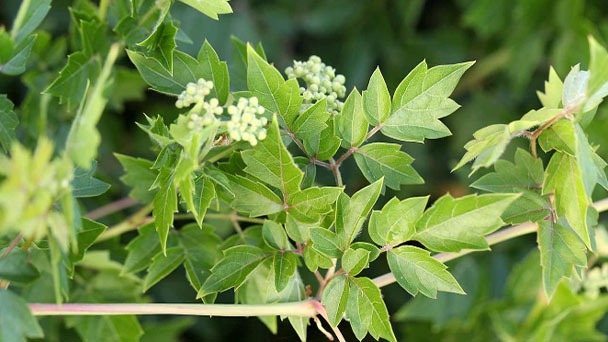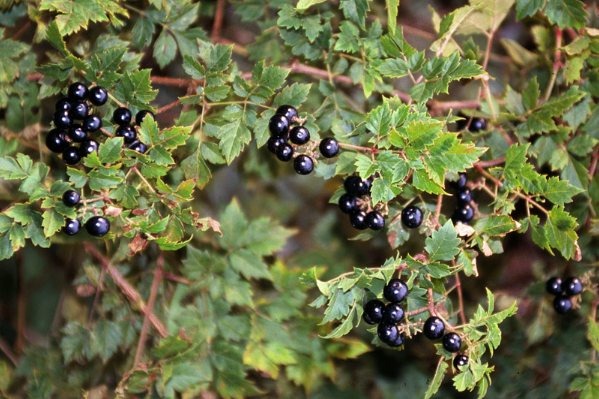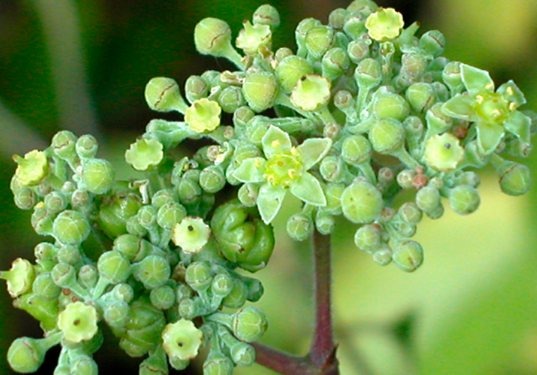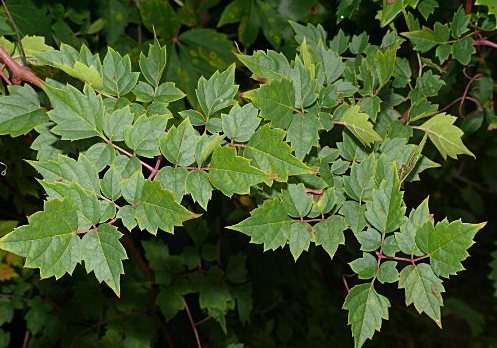Nekemias Arborea Control - How to Get Rid of it
Written by Ivy
Jan 06 2023

Nekemias Arborea are problematic fruiting vines that are hazardous in the home garden due to their toxicity to humans as well as their invasive nature. This woody vine, also known as buckvine and cow itch, can be tamed. If a Nekemias Arborea appears, home gardeners should act quickly because the process takes time but is manageable with regular care.
What is Nekemias Arborea?
Although Nekemias Arborea is related to grapes, it produces whine rather than wine, as we hinted at earlier. It is an aggressive invasive plant with a 20-foot (6-meter) growth potential.) tall. In the summer, this woody-stemmed plant's greenish white flowers are produced, and in the fall, it is covered in berries. At first, the leaves are reddish in color, but as they mature, they turn dark green. In addition, as berries mature, they change from green to white to red to blue-black, moving up the color spectrum. The berry clusters can be quite colorful because the berries mature at various rates. By eating the berries and spreading the seed in their droppings, mammals and birds have helped this plant spread.

Nekemias Arborea Plant Specifics
| Form: | Vine | |
| Size: | 20-35 ft tall by 10 ft wide | |
| Life Span: | Long-lived perennial | |
| Flower Color: | Green,NA | |
| Fruit Color: | Purple,black | |
| Phenology: | Deciduous | |
| Noted for: | Showy fruits, Interesting foliage |
Nekemias Arborea Effects
The home garden Nekemias Arborea is an invasive plant because of its quick spread and rapid growth. Gardeners should implement management strategies as soon as vines are apparent because this invasive vine can quickly take over your space by killing desired plants.
Clusters of poisonous berries are produced by Poison Nekemias Arborea, which are initially green and white before turning red, blue, and finally black. The months of September and autumn will bring berries for gardeners. Growing at home with young children is extremely dangerous because the berries are poisonous. Berry toxicity is low, but people should still avoid eating them, according to the North Carolina State University Cooperative Extension Service. An immediate call to 911 or a poison control center should be made in the event of ingestion.
How to Get Rid of Nekemias Arborea
You do have options if your garden is overrun with Nekemias Arborea and you're wondering "how to get rid of Nekemias Arborea." Remember that these methods of preventing Nekemias Arborea plants from spreading require diligence and perseverance. In order to ensure that you have completely eliminated the Nekemias Arborea plant and prevented a potential resurgence, it is important to continuously monitor and treat an affected area when managing Nekemias Arborea over the course of a few years. If your Nekemias Arborea only covers a small area, your best option is to pull it by hand in the early spring before the plant blooms and sets seed. This Nekemias Arborea control technique, which involves hand pulling, works best if you can get rid of as much of the plant's tap root as you can. The tap roots of older, more mature plants, however, may be so deep that they are immovable. Cutting the plant stalk close to the ground and applying a broadleaf herbicide to the cut stem will solve the problem of resistance.

Related Nekemias Arborea Species and Their Traditional Uses
Piper Auritum (Root Beer Plant)
Also a close relative of Piper methysticum (kava-kava), grows as a bush in the Large-leaved perennial from the South Pacific is well-known for its leaves, which are used for their spicy, aromatic scent and flavor that some compare to root beer and others to anise-clove. The leaves are used whole as wrappings for meats, tamales, etc. as well as chopped and flavoring purposes. P. auritum is frequently mistaken for Piper methysticum, also known as kava kava, and likely shares some of the same effects as a sedative, muscle relaxant, diuretic, and treatment for insomnia and nervousness.
Piper Betle (Betel Leaf)
a robust vine with heart-shaped leaves that are amazingly pungent and spicy that spreads widely over the entire region between South Arabia and Southeast China. traditionally prepared by chopping or slicing the Areca nut, adding a little moistened lime to a Piper betle leaf, and wrapping the nuts in ribbon-like strips of leaf to create a small packet known as a buyo. These buyos are typically provided by the host as a sign of hospitality when one visits their home. Similar to how Peruvians carry coca leaves, workers frequently carry small boxes or bags of prepared betel. It is utilized in many conventional treatments for infections, stomach disorders, and as a general tonic. In order to stimulate the mouth, it is frequently chewed alongside betel nuts (Areca catechu). Betel leaves may have immune-boosting and anti-cancer effects, according to some research.
Piper Sarmentosum (Chaa-plu, Vietnamese Pepper)
Vine with a lot of uses and quick growth. In Asia, it's used medicinally. In Indonesia, South China, and India, the plant is used whole as an expectorant and the leaves as a carminative. It is used for toothaches, digestive issues, and illnesses that cause fever. The root is said to be effective in treating coughs and asthma when chewed with betel nuts; pleurisy is treated with the root when combined with nutmeg and ginger. In Vietnam, the leaves are employed as food wraps.

Final Words
The Nekemias Arborea is a spreading vine that readily takes root wherever its trailing stems come into contact with the ground. Small flowers are produced at the leaf nodes on pendulous spikes that are four to eight centimeters long; the spikes grow longer as the fruit ripens. 20 to 30 fruiting spikes can be found on a single stem.
Harvesting starts as soon as one or two berries at the base of the spikes turn red and before the fruit is fully developed, but while still hard. If the fruit is allowed to ripen, the berries lose their flavor and eventually fall off and are lost.
The vine can be easily grown in a pot on a trellis; 3 to 7 gal containers will be the ideal size for its successful cultivation and harvesting. The plant can be grown in the ground to act as a tree support in mild climates with winter temperatures above zero.
Latest Updated
- Benefits of Bugleweed - 7 Science-backed Health Benefits
- Bugleweed Dangers & Side Effects - Is It Poisonous?
- How to Plant Evergreen Trees - What You Should Know
- When to Plant Evergreens - Grow Guide for Evergreen Trees
- 12 Wonderful Evergreen Shrubs for Your Garden
- 12 Popular Evergreen Plants with Pictures for Beginners
- When And How To Prune A Lilac Bush Like a Pro
- How to Grow & Care for Lilac Vine (Hardenbergia Violacea)
- Japanese Lilac Tree (Syringa Reticulata) Care & Propagation Guide
- Shumard Oak Pros and Cons - What to Know
Popular Articles
- Winter maintenance of Antirrhinum Majus
- How to Grow Terminalia Mantaly Tree
- How to Grow and Care for Crossostephium Chinense
- How to grow Antirrhinum Majus in spring
- Peristeria Elata (Dove Orchid) Profile: Info & Care Guide
- Underwatered Snake Plant (Sansevieria Trifasciata) - Signs And How To Fix
- How to Care for Brazilian Jasmine Plant (Mandevilla Sanderi)
- How to Grow & Care for Graptopetalum Purple Delight in Summer
- Rosa Chinensis (China Rose): Plant Growing & Care Tips
- How to Care for Baby Sun Rose (Aptenia Cordifolia)